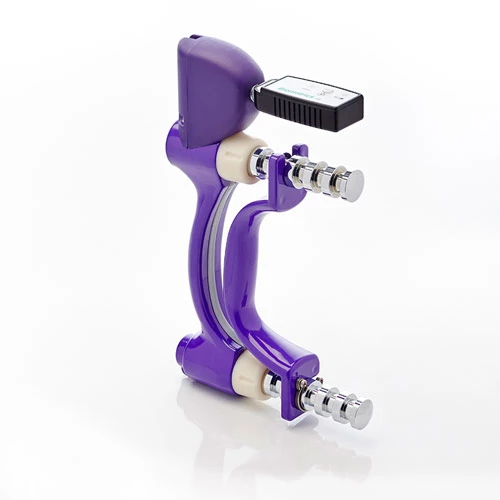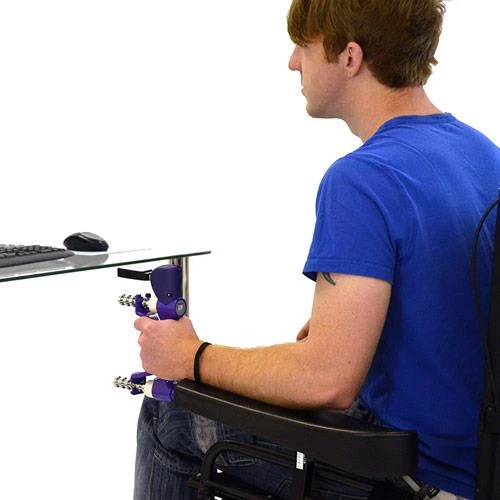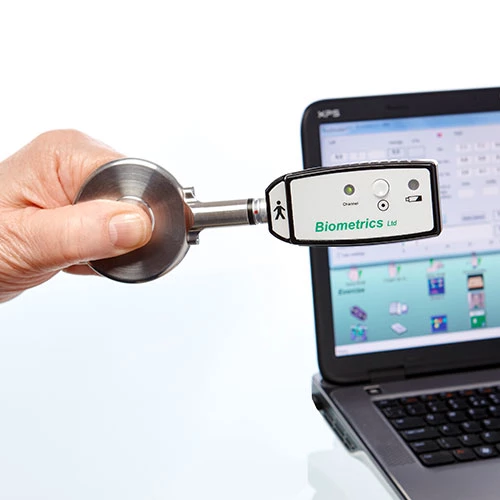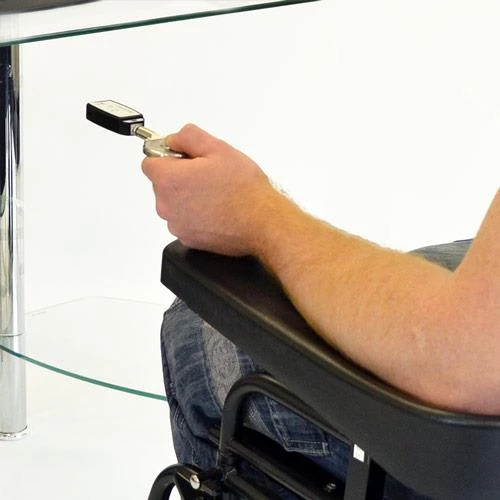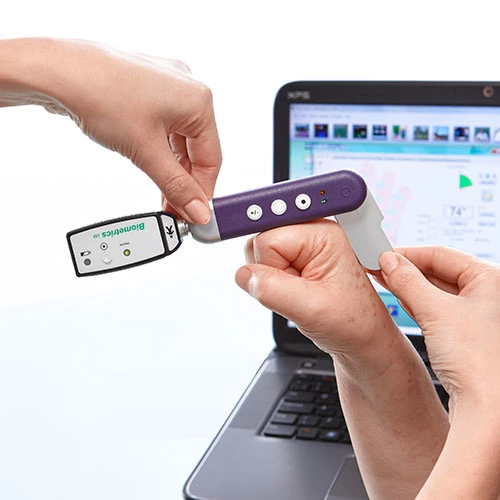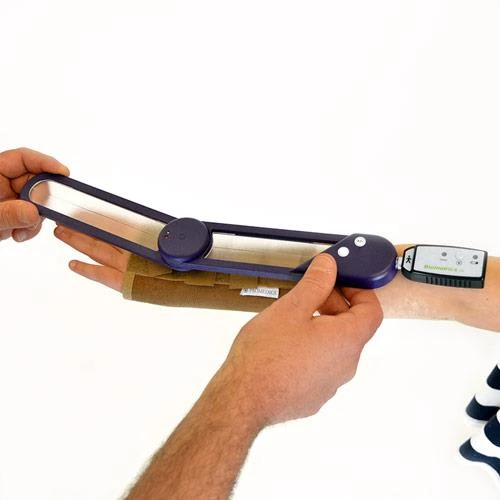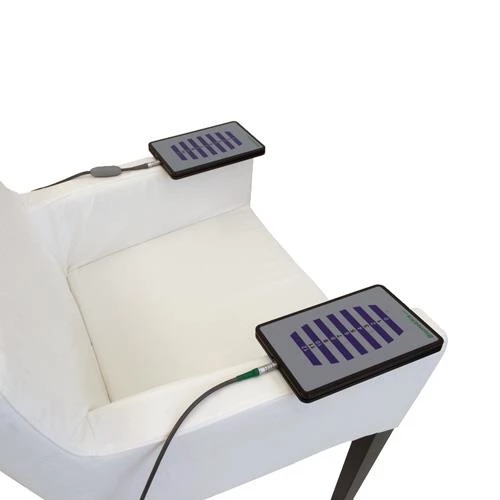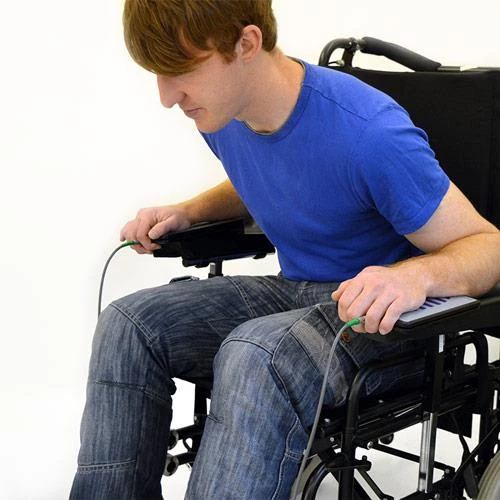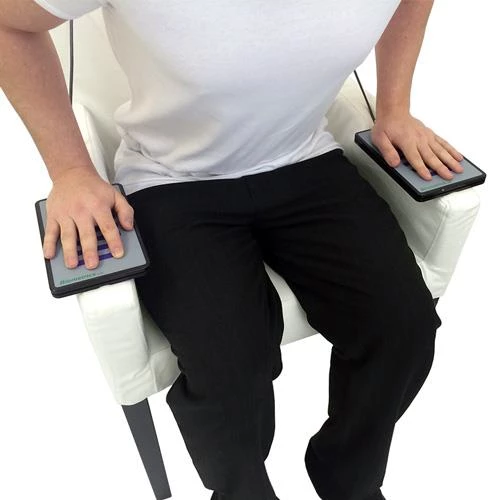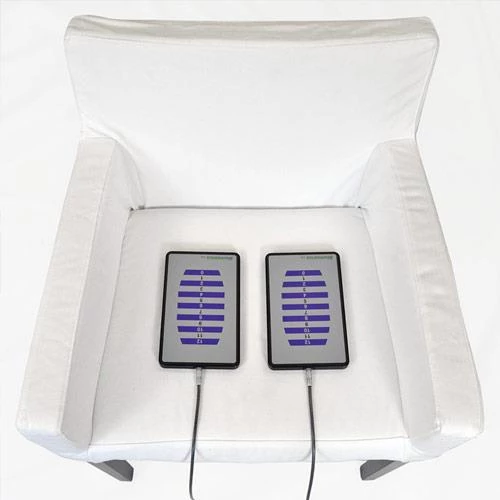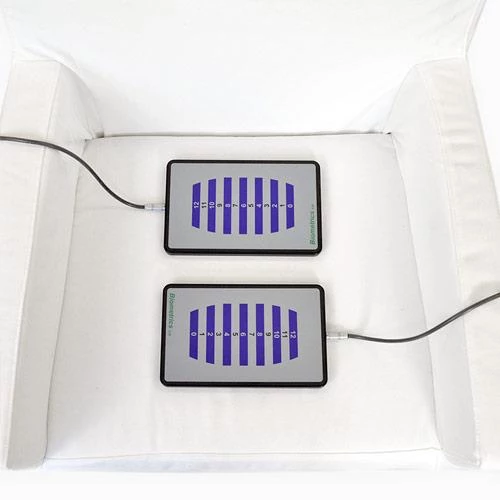Upper Extremity - Evaluation
Occupational Therapists evaluate the wide range of life skills that the spinal injury patient needs when returning home, for going back to work or in pursuing leisure activities. Specific treatments are selected once the patient's preferences and needs are identified in order to meet the best possible outcome for the patient.
E-LINK is the ideal system to quantify and monitor the effectiveness of interventions for the Upper Extremity, particularly as the rehabilitation process is lengthy for many of these patients.
- E-LINK devices are designed for accuracy, for ease and speed of data collection as well as being sensitive to assess very small measurements
- Formal evaluation of Grip and Pinch Strength, joint range of motion can therefore commence very early following injury and continue throughout the full rehabilitation process
- weight-bearing ForcePlates are also available to assess the symmetry and stability of the patient's seated balance or weight-bearing for both upper limbs
- Progress Reports are easily generated and may be utilized as definitive clinical outcome measures
- Data is also readily exported for audit and research purposes
E-LINK Dynamometer
The Dynamometer registers as little as 0.1kg/lb measurement through to a maximum of 90kg (200lbs). This enables the patient's grip strength to be assessed soon after injury and then regularly monitored throughout the full process. The progress reports help both the patient and Therapist assess the effectiveness of the therapy undertaken.
The following tests, using the Dynamometer with E-LINK software, can be carried out quickly and accurately and include assessments that cannot be undertaken with a manual device:
Mini Case History #1
From a Senior Therapist in a Spinal Injury Unit, UK
Mr D a 51 year old man who sustained a C4 Incomplete SCI (ASI D). Mr D was a highly motivated individual who became increasingly frustrated with his hand weakness during his rehabilitation. He found it difficult to recognize any progress with his hand function (specifically his grip strength) as this was relatively slow in comparison to gains he had made with his lower limb function. Mr D was assessed for an appropriate regime using the E-Link, Dynamometer…
As a therapist I found the rapid exchange test of particular benefit when recording his grip strength intermittently throughout his rehabilitation.
I used the RET as the patient had developed a reliance on his left hand and to some extent a disuse on his right side. This had occurred over a period of time prior to his admission to the LSCIC. He did initially (following his injury) have no activity in his right upper limb had an extended period of bed rest in his referring hospital. During this time he naturally developed compensatory strategies and disuse of the right and was subconsciously not always giving his best effort. The RET results and progress reports seemed to give him a recognition of the abilities he had in his right hand which he was then able to translate into function.
Standard Peak Force Grip Test (1/4)
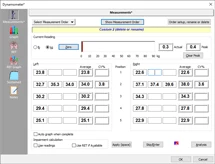
Three measurements can be quickly entered for each hand position as required. The software automatically calculates the average grip and the coefficient of variation percentage as an indication of the measurement consistency. A force distribution graph is displayed for the five positions.
Sustained Grip Test (2/4)
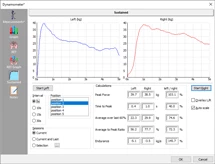
This test measures force over time for a 5, 10, 15 or 30 sec interval. Peak force, time to reach peak force, average to peak ratio percentage (sustainability) and fatigue rate are automatically calculated and immediately displayed. The current graph can be compared with a prior test to analyze progress.
Rapid Exchange Grip Test (3/4)
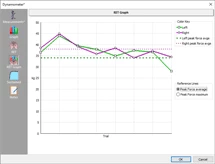
Undertaken for the detection of sub-maximal effort, this test is easily performed and documents the grip force applied for eight tests of each hand with a 1, 1.5 or 2 sec interval set timing. The results are displayed in both graph and table form for immediate analysis.
Progress Reports (4/4)
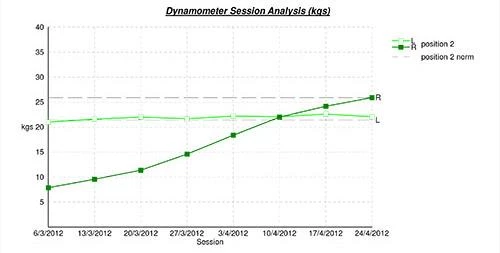
Progress Reports can be readily generated covering a maximum of 10 tests and the data is displayed in both graph and table format. Automatic calculations show the percentage of change from one session to another, the percentage of change from the first test and the percentage comparison to standard, normative Jamar data for both pediatric and adult values. Ideal as an Outcome Measure and for a Discharge Summary.
E-LINK Pinchmeter
The Pinchmeter easily and accurately measures a patient's pinch strength from 0.1kg/lb measurement through to a maximum of 22kg (50lbs). The device accommodates positioning for key pinch, three jaw and tip-to-tip measurements.
It has a unique, low profile design that permits measurement to be undertaken at a point closer to the end range than any other Pinchmeter device, either manual or electronic.
The software quickly and easily records the following:
Standard Peak Force Pinch Test (1/3)
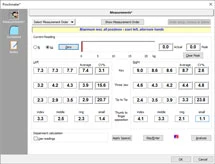
This test can be taken for the key (lateral), three jaw (tri-pod) and tip to tip positions. Three trials per position can be recorded and the software automatically calculates the average Pinch measurement and the co-efficient of variation percentage as an indication of the measurement consistency. Single measurements of Thumb to Digit Opposition can also be entered for each digit.
Sustained Pinch Test (2/3)
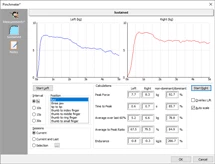
This test measures force over time for a 5, 10, 15 or 30 sec interval. Peak force, time to reach peak force, average to peak ratio percentage (sustainability) and fatigue rate are automatically calculated and immediately displayed. The current graph can be compared with a prior test to analyze progress.
Progress Reports (3/3)
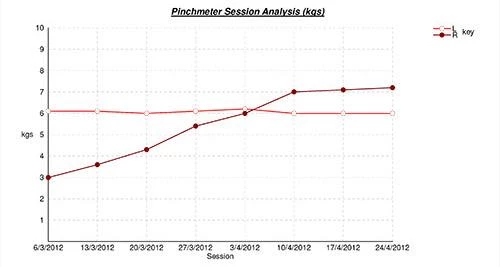
Progress Reports can be easily generated covering a maximum of 10 tests and the data is displayed in both graph and table format. Automatic calculations show the percentage of change from one session to another and the percentage of change from the first test. These Reports are ideal as an immediate clinical Outcome Measure and for Discharge Summaries.
E-LINK Goniometers, Small and Large
E-LINK Goniometers are precise electronic devices, designed for speed and accuracy of data collection. They are invaluable for patients in need of a speedy assessment to minimize discomfort from pain associated with lengthy evaluations.
The goniometer is simply placed over a joint and at the single click of a button the data is recorded in 1 degree increments and entered automatically into the software. This data is clearly displayed on the appropriate screen Graphic.
As with grip and pinch assessments, progress reports can be easily generated by the Software covering a maximum of 10 tests and displayed in both graph and table format.
- The small Goniometer is used for the hand to measure ROM for fingers and thumb
- The large Goniometer is used for the wrist, forearm, elbow and shoulder
- Amputation, ankylosis and arthrodesis can also be documented for the above joints
- The Software can also be configured to accommodate the Neutral Zero method of measurement
- E-LINK Goniometers – ideal for speedy and accurate ROM evaluation
E-LINK ForcePlates
Assessment of seated balance for the Spinal Injury patient can be a major challenge for the therapist. The E-LINK ForcePlate System provides the solution by scientifically quantifying the symmetrical weight distribution of the patient in either the anterior-posterior (front/back) plane or the medial-lateral (left/right) axes. It accurately and objectively assesses a patient's ability to maintain postural stability on a seated surface and evaluates progress over time as an outcome measure.
- Two ForcePlates can be connected to the X4 InterX Unit which is the USB interface to the Computer
- Each ForcePlate registers weight as little as 0.1kg/lb through to 100kg (220lbs)
- Two ForcePlates can be used for evaluation of medial-lateral (left/right) balance or for anterior- posterior (front/ back)
- The seated balance assessment, in a 5,10,15,30 or 60 second test, measures fluctuations in the weight distributed over the ForcePlates
- The results are displayed both in text and graph format for immediate feedback and analysis, with the average % deviation from the center documenting the symmetry of the patient's stance and the standard deviation % documenting stability.
- Up to 10 tests can be compared simultaneously for progress reporting over time and may be used as an outcome measure
Two ForcePlates are also ideal for assessing bilateral upper limb balance, for example when needing to move from sit to stand, and the real-time display in the software gives immediate feedback both to the patient and Therapist.

